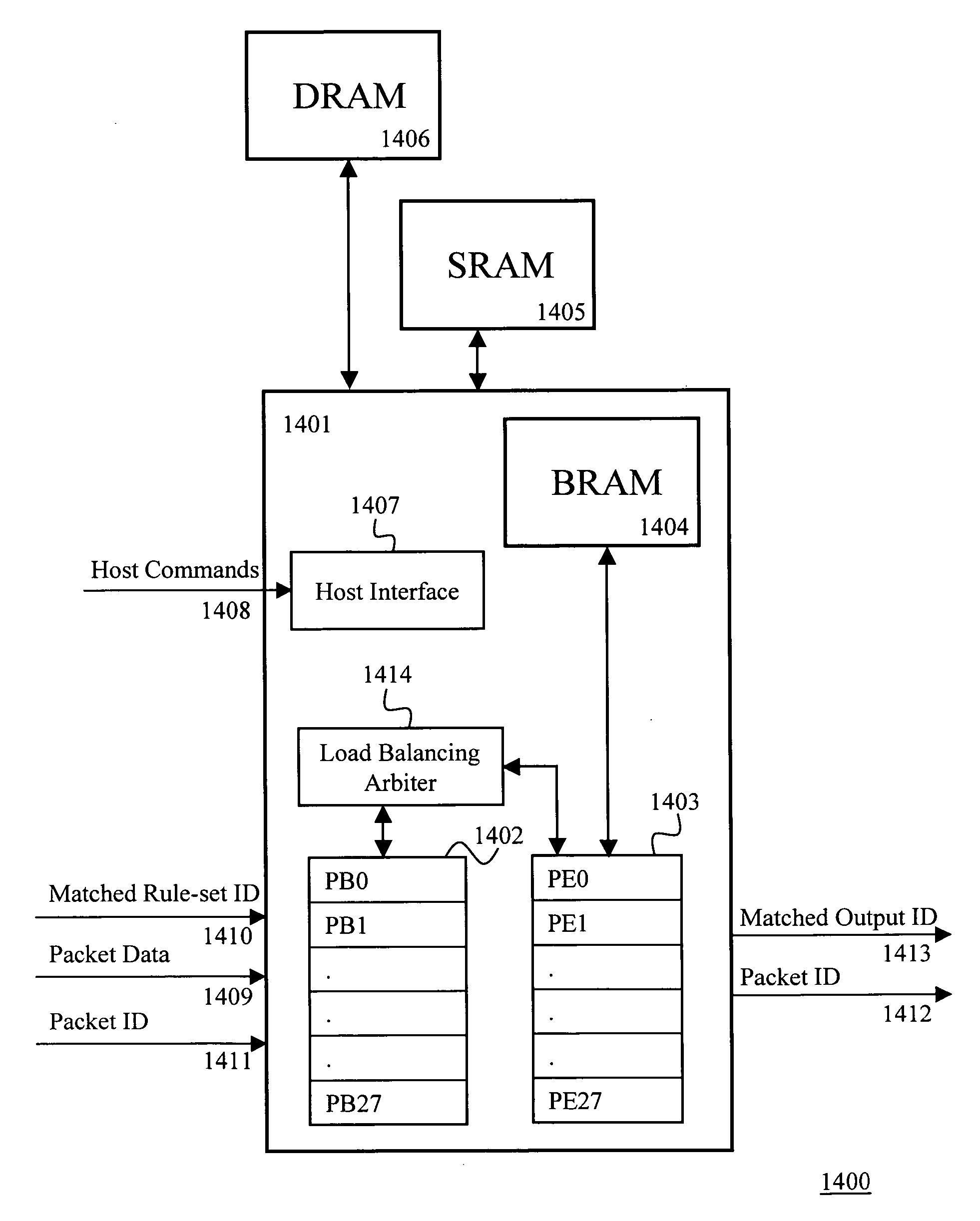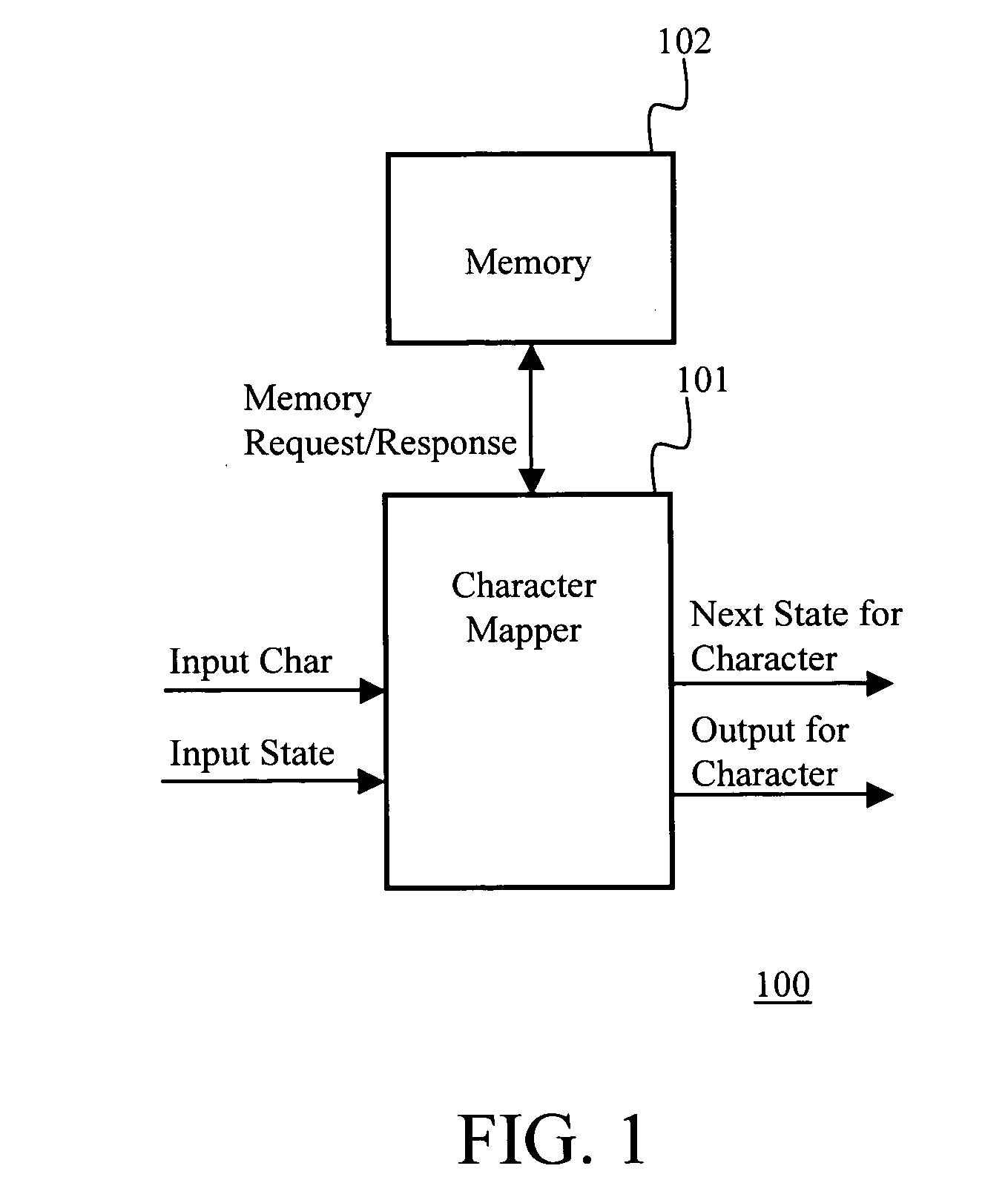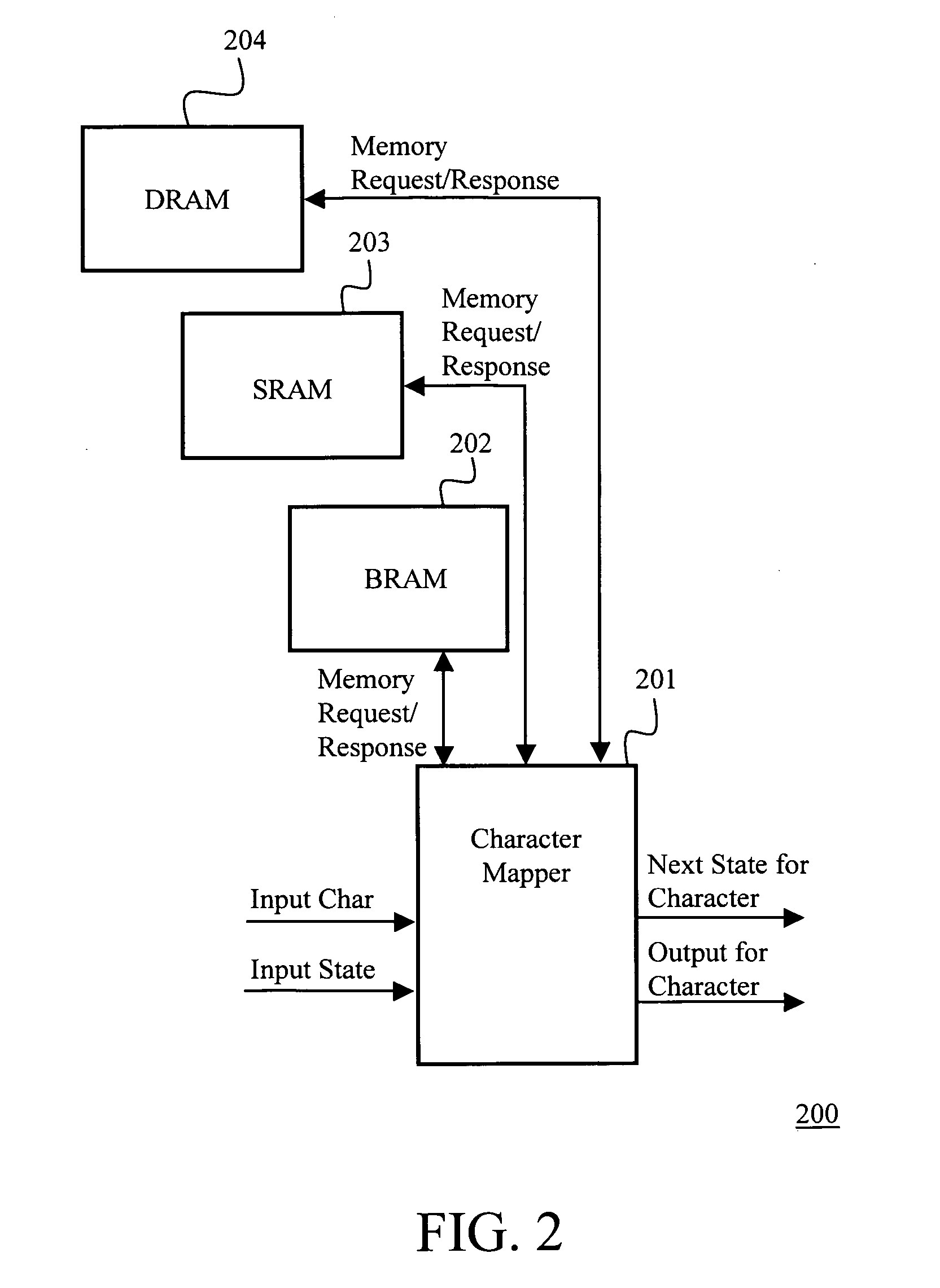Layered memory architecture for deterministic finite automaton based string matching useful in network intrusion detection and prevention systems and apparatuses
a network intrusion detection and string matching technology, applied in the field of layered memory architecture for high-rate text search/string matching, can solve the problem of large setup time of the dram before data can be retrieved, and achieve the effect of reducing the memory bandwidth
- Summary
- Abstract
- Description
- Claims
- Application Information
AI Technical Summary
Benefits of technology
Problems solved by technology
Method used
Image
Examples
working example
[0083] In an embodiment of this invention, a DRAM controller can provide 16 threads access such that within 44 cycles (or 440 ns for a 100 MHz logic), 16 threads can access 512 bits each in a time multiplexed manner. In this embodiment, memory access is the only bottleneck and processing can be done within this time.
[0084] In the preferred embodiment of the invention, we have a total of 28 threads, including the 16 threads mentioned above. We assume that not all characters require DRAM accesses and some can be satisfied simply through BRAM accesses. That is, 16 threads can access the DRAM, while the 12 remaining threads work by accessing the BRAM. Assuming the packet data processing for such bytes takes 4 clock cycles to determine the next state, within 44 cycles, these 28 threads can process 148 bytes.
[0085] This in turn means 3.36 bytes / cycle, which is higher than 2.5 bytes / cycle required for the full-duplex Gbps line-rate operation. According to the invention, the ratio of byte...
PUM
 Login to View More
Login to View More Abstract
Description
Claims
Application Information
 Login to View More
Login to View More - R&D
- Intellectual Property
- Life Sciences
- Materials
- Tech Scout
- Unparalleled Data Quality
- Higher Quality Content
- 60% Fewer Hallucinations
Browse by: Latest US Patents, China's latest patents, Technical Efficacy Thesaurus, Application Domain, Technology Topic, Popular Technical Reports.
© 2025 PatSnap. All rights reserved.Legal|Privacy policy|Modern Slavery Act Transparency Statement|Sitemap|About US| Contact US: help@patsnap.com



